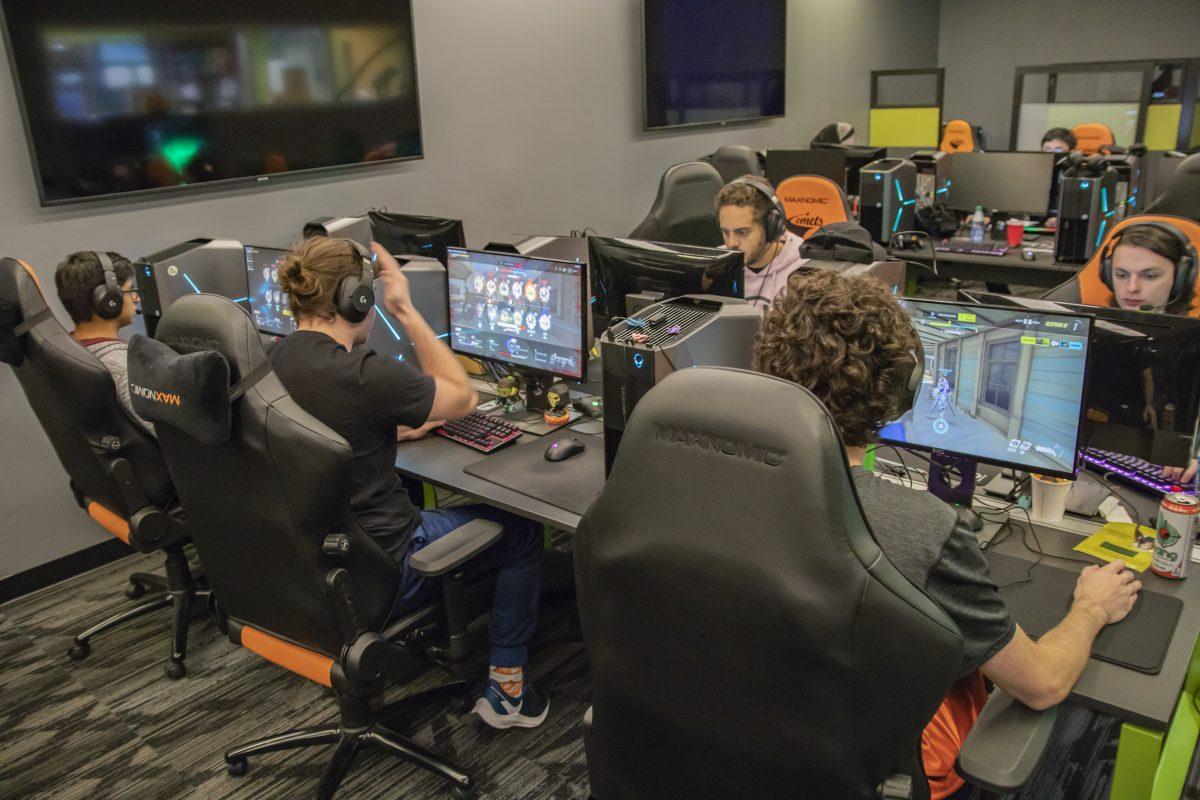
Photo Courtesy of UTD Esports
Esports to cease competing for rest of semester due to COVID-19
The “League of Legends” A Team recently ended
their College League of Legends tournament run with a loss against Winthrop
University at quarterfinals in a close 3-2 series.
The Comets closing series against Winthrop was
the climax of a constantly changing season of “League of Legends.” The College
League of Legends tournament is the regular season for collegiate “League”
play, with the various conferences organized by Riot Games leading up to the
CLoL finals. A unique part of the tournament is its play on live patches,
unlike pro play where patches are delayed. Because of this, the team is forced
to adapt to meta-shifting changes constantly, with healthcare management senior
and team captain Jonathan “Texas” Baadsgaard saying that the team switched
focus on which lane to play from throughout the season.
“I think we went through a lot of changes when
we first started this season,” Baadsgaard said. “We were playing more towards
the bot side with our team comps, and that was pretty successful in scrims, but
I think every single time a patch would hit something would change
significantly that we weren’t really used to.”
Throughout each patch from 10.1 through 10.5,
the latter being the last patch on which the team played, meta champions were
continually nerfed while others were buffed significantly. Various champions,
including bot lane champions Aphelios and Senna, top lane Soraka and Ornn rose
to significance with Riot making larger balance changes to try and keep the
game healthy. While the Comets had large periods of improvement throughout the
shifting tides of the metagame, Baadsgaard said it was difficult to stay on the
track of continual improvement.
“I think that one of the things that we could
definitely improve on is when we have that spike of improvement, to try and
maintain that … you want to be at that level always,” Baadsgaard said. “You
don’t want to just go through a loss and then experience that huge spike in
improvement and then it kind of goes down again eventually.”
The Comets were able to fight through to the
quarterfinals by sticking to a popular team composition strategy of drafting
scaling teamfight-oriented teams to outplay the enemy whenever friendly
ultimates are available, Baadsgaard said. Popular champions with the team were
Aatrox and Sett for top lane, Jarvan IV and Sejuani for jungle, Leblanc and Zoe
for mid lane and mages for the bot side including Heimerdinger and Veigar.
“We found that playing those AP mages actually
was a huge benefit. It was really hard to play bot side as the enemy,”
Baadsgaard said. “And Sharpe, who’s our midlaner who’s insane … we’d definitely
just let him choose whatever it is that he wanted to do. Like if he wanted to
play Zoe, (we’d say) ‘pick Zoe right now, we don’t care.’”
Although they were eventually knocked out by
Winthrop in the quarterfinals, it was in a close back-and-forth match. Winthrop
and UTD played against each other until a score of 2-2, when in the last game
Winthrop pulled out a Xayah/Rakan combination in the bottom lane to throw off
UTD’s draft. This led to UTD drafting suboptimal champions and losing to
Winthrop in the draft, which contributed to their ultimate loss. Despite this,
the Winthrop series was Baadsgaard’s favorite series of the season because of
all of the buildup and when the game reached its “silver scrapes” moment, or
when a league series reaches its maximum number of games.
“I really liked watching Winthrop vs. UTD,”
Baadsgaard said. “I thought that it was really exciting especially on game five
or like silver scrapes is going and …
all that buildup to that game was fun to not only be a part of, but also to
watch back as a viewer.”
For the Comets, the season is over for now.
But even with coronavirus shutting down much of the scene, including CLoL
itself, there’s still games to be played in the future, and Baadsgaard said
he’s grateful to the team and for the experience.
“I really started this out as just something
that I could prove to myself, something that I could show that I really can
compete at a certain level … and I’m grateful for my team for backing me up and
supporting me when I wasn’t that good and helping me get to the point where I
was,” Baadsgaard said.